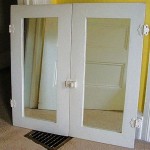How to Mirror iPhone to Macbook Pro
Mirroring an iPhone's screen to a Macbook Pro offers several advantages, from presenting content on a larger display to recording device activity. Several methods facilitate this screen mirroring, each with its own strengths and weaknesses. Understanding these methods can help users choose the best option for their specific needs.
Using AirPlay with QuickTime Player
One of the simplest methods to mirror an iPhone to a Macbook Pro leverages AirPlay through QuickTime Player. This approach requires both devices to be on the same Wi-Fi network and offers a relatively straightforward setup. Users connect their iPhone to their Macbook Pro by selecting the Macbook Pro as the AirPlay receiver within the iPhone's Control Center. Once connected, the iPhone's display is mirrored in a QuickTime Player window on the Macbook Pro.
This method benefits from its simplicity and readily available tools. QuickTime Player is a standard application on macOS, eliminating the need for third-party software. Furthermore, the wireless connection provides flexibility, allowing users to move around without being tethered by cables.
However, the reliance on Wi-Fi can introduce latency, especially on congested networks. This lag can be noticeable when mirroring fast-paced content like games or videos. Additionally, the quality of the mirrored display may be affected by network conditions.
Mirroring with a Lightning Cable and QuickTime Player
For a more reliable and stable connection, a wired approach using a Lightning cable is an effective alternative. This method involves connecting the iPhone to the Macbook Pro with a Lightning-to-USB cable and then selecting the iPhone as a camera input source within QuickTime Player. The iPhone's display is then mirrored on the Macbook Pro, providing a direct and stable connection.
The primary advantage of a wired connection is its stability and reduced latency compared to AirPlay. This makes it suitable for scenarios where a smooth and responsive mirroring experience is crucial, such as demonstrating app functionalities or recording high-quality video tutorials. The wired connection also bypasses potential Wi-Fi interference.
However, this method limits user mobility due to the physical cable connection. Users must remain close to the Macbook Pro while mirroring. Additionally, the need for a specific cable type can be inconvenient if a Lightning-to-USB cable is not readily available.
Utilizing Third-Party Screen Mirroring Applications
Several third-party applications offer screen mirroring functionality, often with additional features beyond those provided by QuickTime Player. These applications typically provide both wired and wireless mirroring options. Some applications offer features such as recording mirrored content, adjusting resolution and frame rate, and adding annotations to the mirrored display.
Third-party applications cater to more specialized needs. Features like recording and annotation can be valuable for content creators or software developers. Furthermore, some applications offer enhanced performance and customization options compared to standard solutions.
However, users should exercise caution when selecting third-party applications. Some applications may require a paid subscription or may introduce compatibility issues. It is essential to research and choose reputable applications from trusted sources.
Choosing the Right Mirroring Method
Selecting the optimal mirroring method depends on the specific requirements of the task. For quick and casual mirroring, AirPlay via QuickTime Player offers a convenient solution. When stability and low latency are paramount, a wired connection using a Lightning cable and QuickTime Player is recommended. For more advanced features and customization options, third-party applications provide a broader range of functionalities.
Troubleshooting Common Mirroring Issues
Occasionally, users may encounter issues when attempting to mirror their iPhone to their Macbook Pro. Common problems include connection failures, audio synchronization issues, and poor mirroring quality. In such cases, several troubleshooting steps can be taken. Ensuring both devices are on the same Wi-Fi network and restarting both devices can often resolve connectivity problems. Checking for software updates on both the iPhone and Macbook Pro can also address compatibility issues. If issues persist, consulting online resources or contacting Apple support can provide further assistance.
Optimizing Mirroring Performance
Several steps can be taken to optimize mirroring performance and achieve a smooth and responsive experience. Closing unnecessary applications on both devices can free up system resources. Reducing the distance between the iPhone and Macbook Pro when using AirPlay can minimize latency. Choosing a higher-quality Lightning cable for wired connections can ensure stable data transfer. Adjusting the mirroring resolution or frame rate within some applications can also improve performance depending on the network conditions and the capabilities of the devices.

How To Mirror Iphone Display Macbook Ios 12 Macos Mojave

How To Mirror Iphone Mac Without Wi Fi

5 Easy Steps To Mirror Iphone Mac Istreamer

2024 Updated How To Mirror Iphone Mac With 5 Methods

How To Mirror Iphone Screen Mac Quick Easy Wireless 2024

How To Mirror Iphone Mac 2024

2024 Updated How To Mirror Iphone Mac With 5 Methods

How To Mirror Iphone Mac 8 Methods

How To Mirror Iphone Mac Wirelessly Full Guide

How To Screen Mirror Ios 13 Iphone A Mac Or Windows Computer Wirelessly








